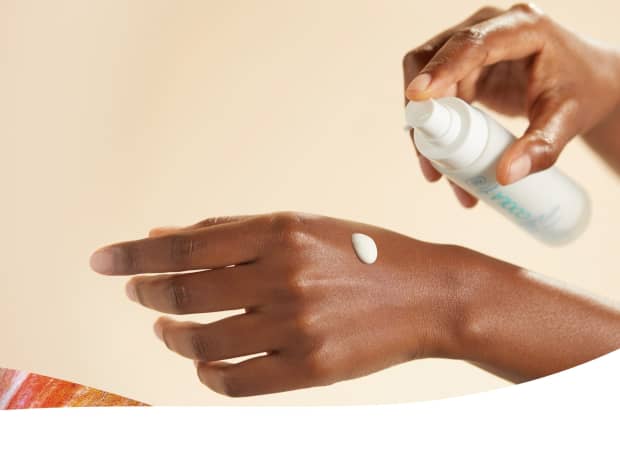
Benefits of Ceramides In Skincare and How to Use Them
Last Updated: May 23, 2022
Does your skin need a boost? Check out ceramides – the secret skincare ingredient your beauty routine has been waiting for.
If you’ve heard of ceramides but aren’t sure what they’re for, you’re in the right place. My name is Dr. Anna Chacon, and I’m a board-certified dermatologist from Miami, Florida. Skincare is my passion, and I love educating people about products and helping them choose the right ingredients for their skincare concerns.
Ceramides are having a spotlight moment in moisturizers and face washes, and they’re one of my favorite ingredients to recommend to my clients. Keep reading for answers to common questions I get about ceramides, and learn how to use these healthy fats in your skincare routine.
What are ceramides?
Ceramides are a type of lipid or fat that naturally occurs in the skin. In fact, ceramides make up 50% of the outer layer of your skin – and they’re essential for maintaining plump, hydrated skin as we age. Think of ceramides as the glue that holds your skin cells together — they also help retain moisture and prevent environmental damage from pollution or harsh weather conditions.
Do ceramides decrease with age?
As we age, lipid and ceramide production decreases, and our skin becomes thinner and develops wrinkles. Adding ceramides to your skincare, especially as you enter your 30s and 40s, is integral for keeping skin smooth and hydrated.
Are ceramides and peptides the same thing?
Ceramides are a fatty acid, whereas peptides are a type of amino acid that helps form collagen and elastin. Both are fantastic ingredients for your skin, but with very different functions.
Ceramides increase hydration, help restore the skin barrier, and reduce the appearance of wrinkles.
Peptides are for targeted skincare concerns – like increasing skin firmness or decreasing inflammation. You can absolutely use ceramides and peptides together for plump, firm skin.
Learn how to get firm, glowing skin with our guide on collagen for skincare.
5 Benefits of ceramides for skin
Restores the skin barrier
The skin barrier, also called “acid mantle” or “moisture barrier,” is the top layer of your skin and the first line of defense against pollution, toxins, and infection. Ceramides help restore the skin barrier after it’s been damaged due to UV radiation, over-exfoliation, stress, or smoking.
Moisturizes skin
Ceramides create a protective layer on the skin that locks in moisture and helps prevent dryness and dehydration.
Reduces signs of aging
The loss of ceramides as we age is a major contributor to signs of aging. Applying ceramide creams and serums helps the skin stay hydrated and strong – which helps prevent wrinkles and fine lines from forming.
Protects skin
Because ceramides strengthen the skin barrier, they help the skin keep out environmental aggressors like toxins, pollution, and damage from dry weather or harsh winds.
Soothes irritation
Ceramides are an amazing skin soother for conditions like psoriasis, eczema, and inflammation from acne. They’re also a great way to soothe skin after using actives like retinol or other chemical exfoliants.
Are there any side effects of using ceramides?
There aren’t any known side effects of using ceramides in skincare. Heavy moisturizers that contain ceramides could cause breakouts if you’re acne-prone — if that’s the case, look for a ceramide serum or a lightweight moisturizer instead.
How to use ceramides in skincare
The golden rule of skincare application is to use your lightest products first and your heaviest products last. To start, cleanse your face, then apply your toner — if you’re using a ceramide serum, this is where you’ll apply it. If you have a ceramide moisturizer, apply any serums first, then follow up with your ceramide moisturizer and a sunscreen if it’s daytime. For the best results, use ceramides in the morning and at night.
Can you mix ceramides with vitamin C?
Absolutely. You can use ceramide products before, mixed with, or after your vitamin C products. These ingredients work well together, and there are no known side effects with this combo.
Can you mix ceramides and retinol?
Ceramides can be used after applying retinol, AHAs, or BHAs to replenish the skin. Just make sure you don’t use retinol on the same day as AHAs and BHAs, or you could severely irritate your skin.
For a less harsh alternative to retinol, try bakuchiol. It’s plant-based, and has the same exfoliating effects as retinol – without the potential side effects.
Cocokind Ceramide Barrier Serum
Cocokind Ceramide Barrier Serum has everything I look for in a ceramide product. It has a blend of five types of ceramides that are incredible for healing dry skin, fatty acids, and squalane – plus ceramide precursors that help the body create new ceramides. What I love most about this product is that it contains lactic acid: a super gentle exfoliator that sloughs off dead skin cells so the ceramides can penetrate the skin more deeply.
